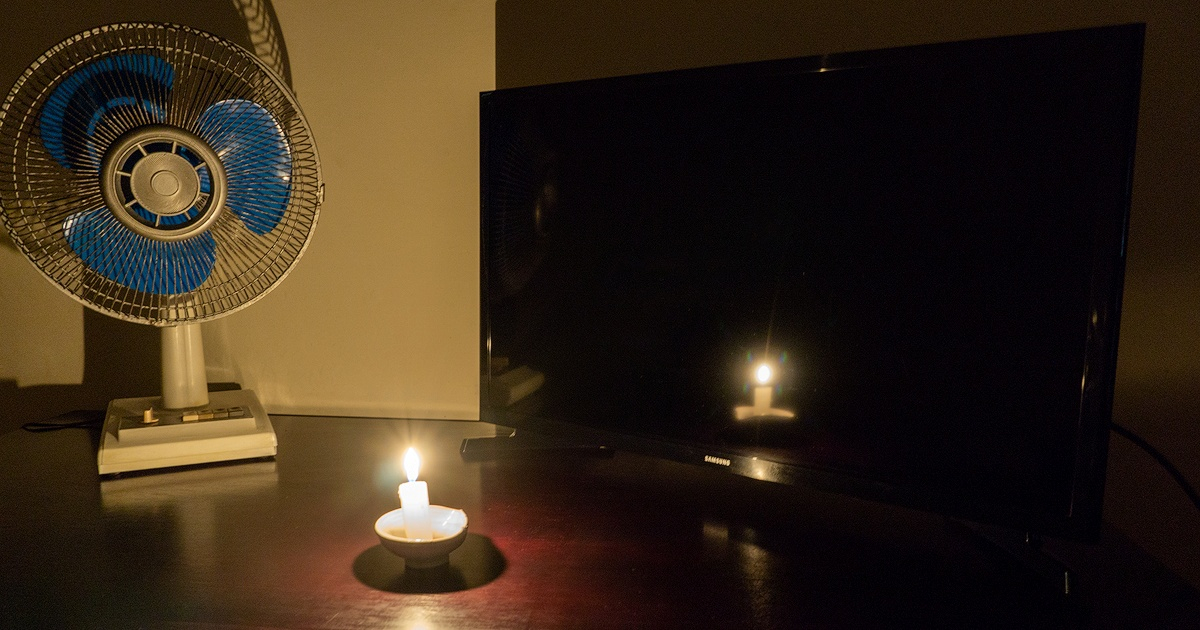The Electric Union (UNE) of Cuba acknowledged in its Saturday report that the electrical service was disrupted for 24 hours the previous day, with blackouts totaling 1,474 MW. This figure, the highest in recent months, occurred at 8:40 p.m. during peak hours.
At 7:00 a.m., the availability of the National Electroenergetic System (SEN) was 1,990 MW, while demand reached 2,760 MW, causing a shortfall of 787 MW due to generation capacity deficits. Estimated disruptions throughout the day amounted to 1,000 MW.
Four thermoelectric units are currently out of order: unit 6 of the CTE Nuevitas, unit 2 of the CTE Felton, and units 5 and 6 of Renté. Additionally, units 1 and 3 of the CTE Santa Cruz, as well as unit 1 of the CTE Felton, are undergoing maintenance. Thermal generation limitations account for 463 MW of the deficit.
There are also 51 distributed generation plants offline due to fuel issues, affecting 384 MW. For the peak period, it is expected that distributed generation motors currently offline due to fuel shortages will add 150 MW, and unit 6 of the CTE Rente will contribute another 60 MW (currently in the startup process).
With these projections, peak hour availability is estimated at 2,200 MW against a maximum demand of 3,300 MW, resulting in a deficit of 1,100 MW. If conditions remain as forecasted, a 1,170 MW disruption is anticipated during this period.
In recent hours, the Electric Union of Cuba announced "emergency actions" for several thermoelectric units that have suffered breakdowns. Alfredo López Valdés, UNE's general director, stated that this weekend three blocks of the Máximo Gómez (Mariel) and Diez de Octubre (Nuevitas) thermoelectric plants will be synchronized to the system, contributing a total of 280 MW. From the Mariel plant, he explained that two machines are in a "relatively positive" state and could come online, reducing blackout hours by four.
"This won't completely solve the problem but will improve the current situation," he noted. Another block of the Nuevitas thermoelectric plant could add 100 MW to the system, translating into two fewer hours of blackout.
The director attributed the severe blackouts to the poor condition of the thermoelectric plants, high temperatures, and increased residential demand due to the purchase of air conditioning units and electric motorcycles.
The energy crisis keeps the population under constant stress due to blackouts, which have lasted more than 14 hours in some areas. On Thursday night, protests erupted in Baracoa, Guantánamo, where people took to the streets to express their outrage over the abusive power outages and food shortages.
On the same day, President Miguel Díaz-Canel, during a visit to the Amancio municipality in Las Tunas, acknowledged that the recent power cuts have been "terrible" in an apparent show of empathy. He claimed that several plant breakdowns coincided with maintenance works just before summer, and that people need to be "informed" about the situation, so they understand it as "uncomfortable but temporary."
Understanding Cuba's Energy Crisis
Here are some frequently asked questions and answers to help understand the current energy crisis in Cuba.
What is causing the severe blackouts in Cuba?
The severe blackouts in Cuba are attributed to the poor condition of the thermoelectric plants, high temperatures, and increased residential demand due to the purchase of air conditioning units and electric motorcycles.
How long are the blackouts expected to continue?
According to President Miguel Díaz-Canel, the current situation is "uncomfortable but temporary," although no specific timeline has been provided for when the blackouts will end.
What measures are being taken to address the energy shortfall?
The Electric Union of Cuba has announced emergency actions, including synchronizing three blocks of the Máximo Gómez (Mariel) and Diez de Octubre (Nuevitas) thermoelectric plants to the system, which will contribute a total of 280 MW.
